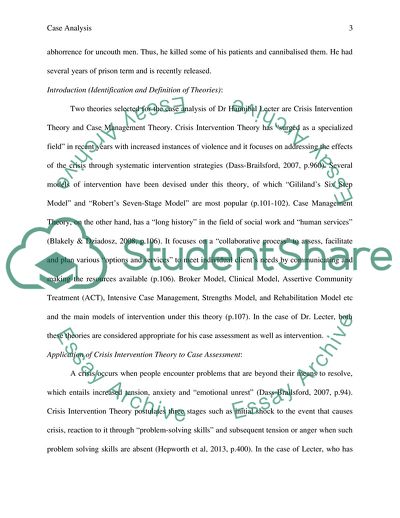Cite this document
(Analysis of Dr. Hannibal Lecter: Comparing and Contrasting of Two Practice Theories Case Study Example | Topics and Well Written Essays - 2750 words, n.d.)
Analysis of Dr. Hannibal Lecter: Comparing and Contrasting of Two Practice Theories Case Study Example | Topics and Well Written Essays - 2750 words. https://studentshare.org/sociology/1804403-case-analysis
Analysis of Dr. Hannibal Lecter: Comparing and Contrasting of Two Practice Theories Case Study Example | Topics and Well Written Essays - 2750 words. https://studentshare.org/sociology/1804403-case-analysis
(Analysis of Dr. Hannibal Lecter: Comparing and Contrasting of Two Practice Theories Case Study Example | Topics and Well Written Essays - 2750 Words)
Analysis of Dr. Hannibal Lecter: Comparing and Contrasting of Two Practice Theories Case Study Example | Topics and Well Written Essays - 2750 Words. https://studentshare.org/sociology/1804403-case-analysis.
Analysis of Dr. Hannibal Lecter: Comparing and Contrasting of Two Practice Theories Case Study Example | Topics and Well Written Essays - 2750 Words. https://studentshare.org/sociology/1804403-case-analysis.
“Analysis of Dr. Hannibal Lecter: Comparing and Contrasting of Two Practice Theories Case Study Example | Topics and Well Written Essays - 2750 Words”. https://studentshare.org/sociology/1804403-case-analysis.


